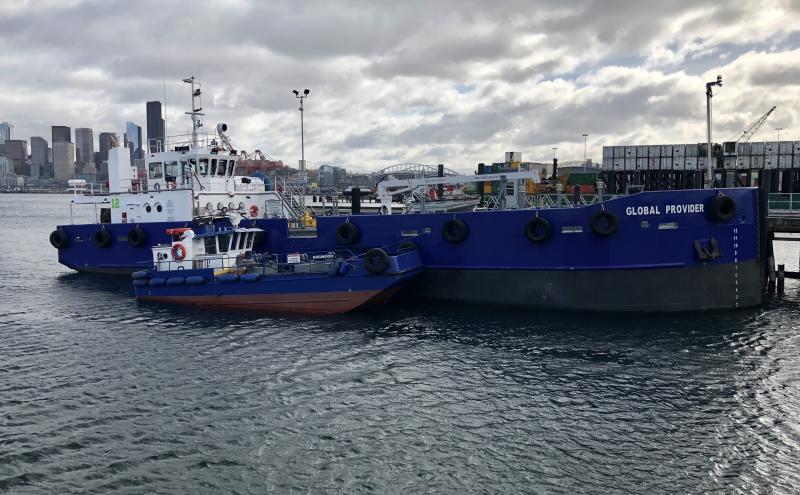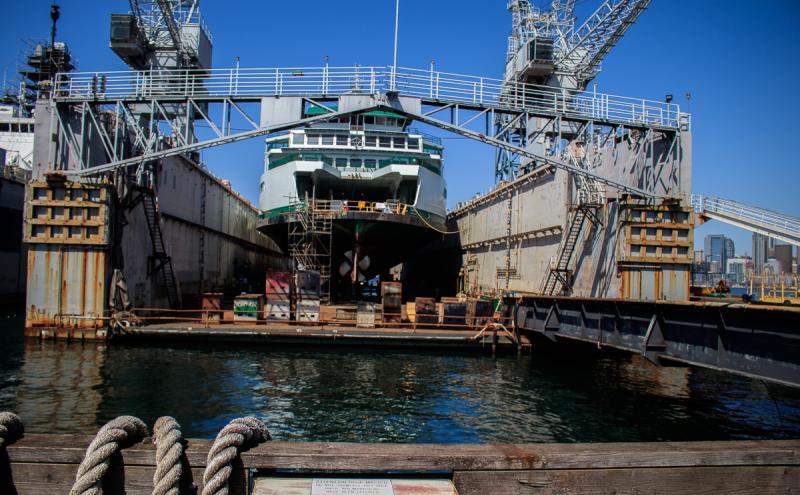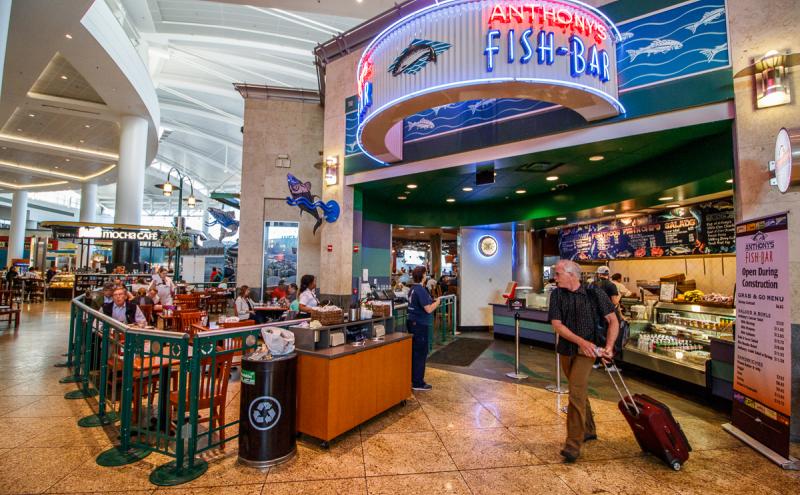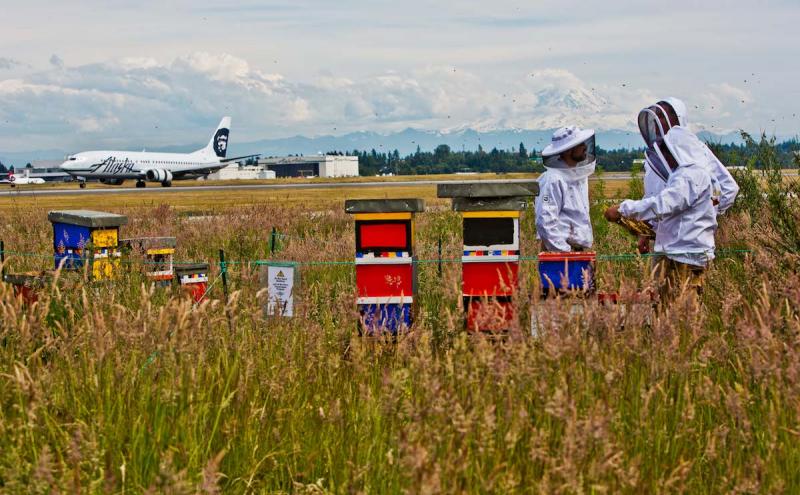
Jets are not the only things flying around SEA Airport — the airport is also home to a large colony of honey bees, an efficient and sustainable ecosystem that benefits the environment. As many as 36 bee hives filled with thriving honeybees are located in three different apiaries around the airfield.
The hives have been in place at SEA since 2013, when the Port of Seattle joined forces with local nonprofit The Common Acre to establish Flight Path, a project that has turned the unused green spaces on the south end of SEA into a native pollinator habitat — and in the process, produced a breed of bees better suited for survival in the coming years.
The Common Acre was awarded a 2017 Port of Seattle Environmental Excellence Award for Innovation in the Small Business category for their ecological restoration work, breeding disease-resistant honeybees, and surveying local bee populations at SEA. The organization worked with other parties to develop a custom native pollinator seed mix that improves aviation safety by attracting bees and detracting birds.
“We need open ground and that’s harder to come by in an urban environment,” said Allison Rinard, executive director of The Common Acre. Those qualities are part of what makes the airport so suited to housing bees and pollinator habitat.
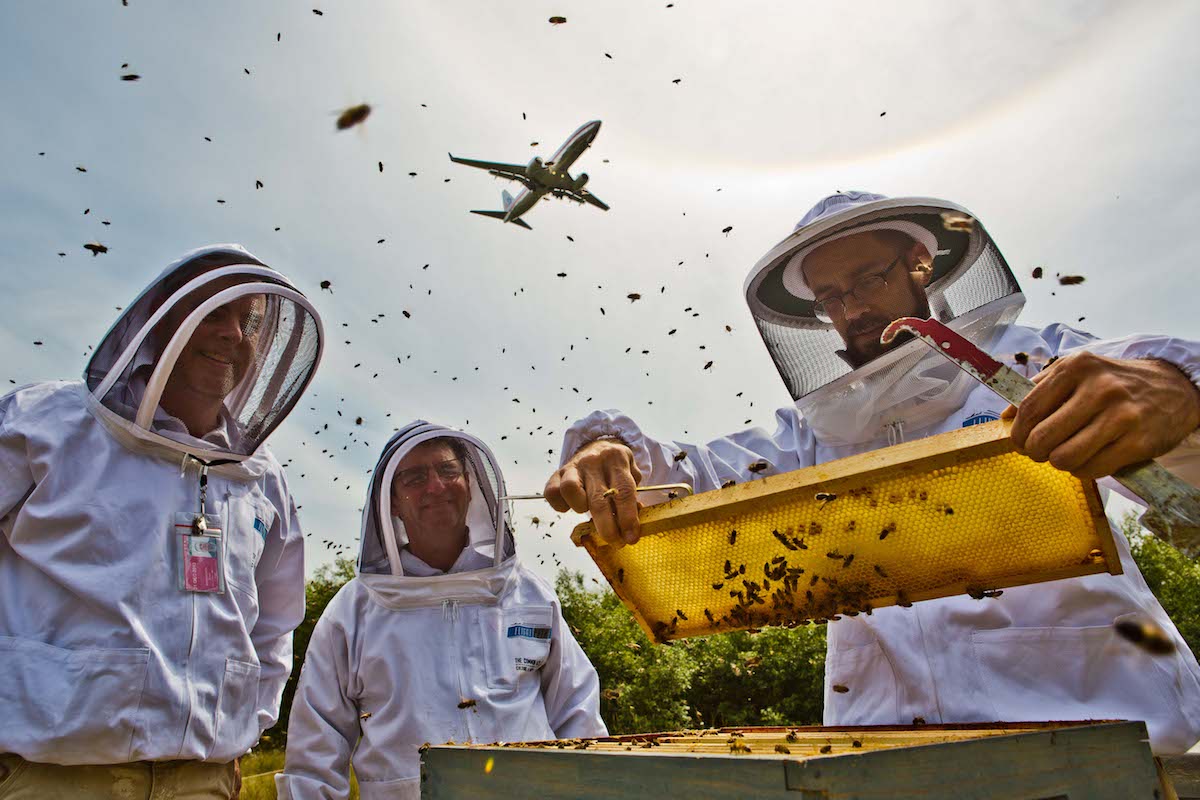
Rinard said the parallels between airports and bees as transportation systems are undeniable. They can help the general public understand the challenges of operating an efficient, sustainable system, she said. Thirty hives at the airport at the height of summer perform 3.75 million flight operations per day. Interest in the bee project has been sparked by an art exhibit at SEA in 2014-15 and the honey generated from the beehives and distributed across the region.
Rinard said one significant ecological impact of the project is the pollination services the bees provide for native plants. The Common Acre has converted three acres of the former Tyee Golf course at the south end of SEA Airport to an ecologically healthy pollinator habitat. On these three acres, the Common Acre has worked with the Port of Seattle and other local organizations to plant native plants that are designed to attract bees and supply the longest bloom possible. These wildflowers provide two benefits to bees: first, long blooming flowers that provide a longer window of access and second, patches of bare ground and plant types for bees to nest in.
The long-term goal of the Common Acre is to promote hardy bee populations in the region by increasing their genetic diversity and supporting them with adequate habitat.
Rinard said the primary focus for 2018 is to continue surveying wild bee populations and develop successful maintenance protocols for the establishing meadow that makes up the pollinator habitat. In the long term, the Common Acre envisions pollinator habitat as a standard landscape practice Port-wide and beyond. The Flight Path program will also be replicated this year at the Boeing factory in Everett.


